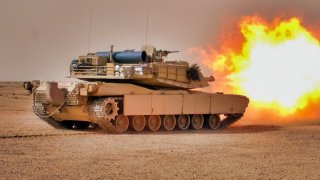Stavros Atlamazoglou

The situation in Ukraine remains fluid. The war has been going on for nearly 26 months. During this period, the battlefield has shifted about substantially.
In the early morning hours of February 24, 2022, the Russian military launched a large-scale invasion of Ukraine.
The war began with rapid Russian advances all across the operational map. Kherson, a major urban center in the south, fell. Kharkiv, the second-largest city in Ukraine, located in the east only a few dozen miles from the border with Russia, was besieged. In the north, Russian troops entered the suburbs of the capital, Kyiv.
Ukraine, with the assistance of a U.S.-led international coalition that would end up numbering more than 40 countries, held its ground. Through hard but clever fighting, the Ukrainians stabilized the battlefield and destroyed Russian President Vladimir Putin’s plans for a three-day war.
Then the Ukrainians started to push back.
Over the span of one week in September, the Ukrainian military launched a surprise counteroffensive and liberated hundreds of square miles of territory in Eastern Ukraine. A few weeks later, Ukrainian forces replicated their success, this time in the south. Kyiv liberated large swaths of territory in the Zaporizhzhia and Kherson provinces, forcing the Russians to evacuate Kherson city itself.
As 2023 dawned, the focus of the war shifted to a rather inconspicuous town in the Donbas region. Bakhmut became a household name and is still the longest and bloodiest battle of the conflict. From November 2022 to May 2023, the Russian military threw everything it had against the defenders of the town. The Kremlin grew so desperate that it largely gave control of the offensive to the barbarous Wagner Group private military company and its bloodthirsty leader, Yevgeny Prigozhin. At the cost of nearly 100,000 Russian troops and mercenaries dead and wounded, Moscow captured Bakhmut. But by that point, Ukraine was ready to strike back once more.
In June 2023, the Ukrainian military launched a long-anticipated large-scale counteroffensive in the south of the country. The goal was to create an operational breakthrough that would reshape the battlefield. The Ukrainian forces fought hard, but they did not go far. The Russians were expecting an attack in the south, so they had turned the area into the most heavily fortified region in Europe since the end of World War II.
The Russian military went back on the offensive. And the fluid stalemate in Ukraine continues.
The Need for Ammo in Ukraine
Ask anyone in Ukraine about what they need, and you will hear “ammunition.” Ammunition, especially artillery rounds, is key to how the war is fought. Both sides go through thousands of artillery shells every day. (During particularly intense days, the Ukrainians will go through 6,000 artillery rounds, while the Russians can fire up to 20,000 rounds.)
Ukraine needs a restart. Ammunition will help it buy time and stabilize the battlefield while also building up its forces for a new large-scale counteroffensive. Ukraine needs new weapons systems, including fighter jets and long-range munitions that would change the air war and pave the way for successful ground operations.
No comments:
Post a Comment